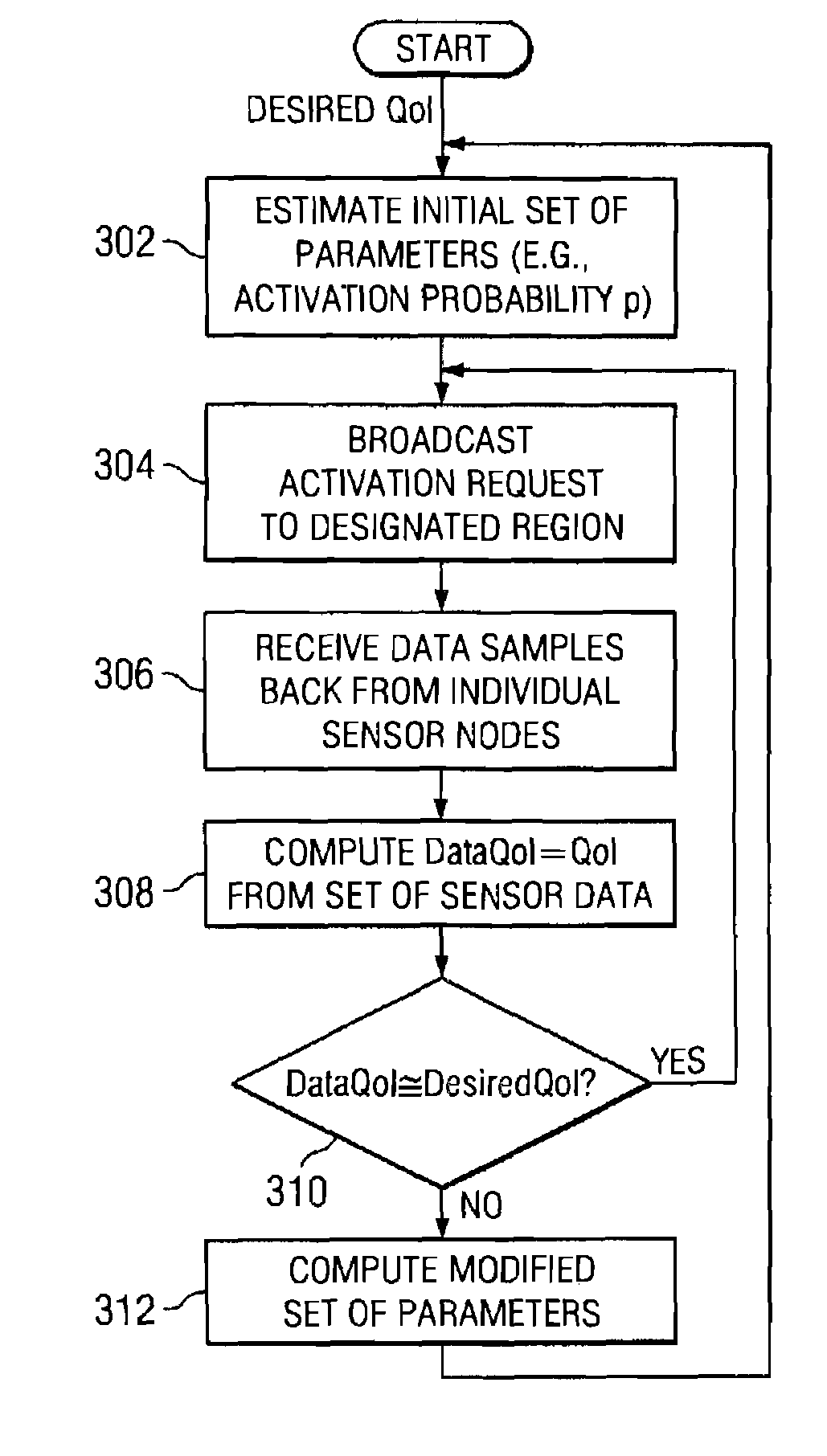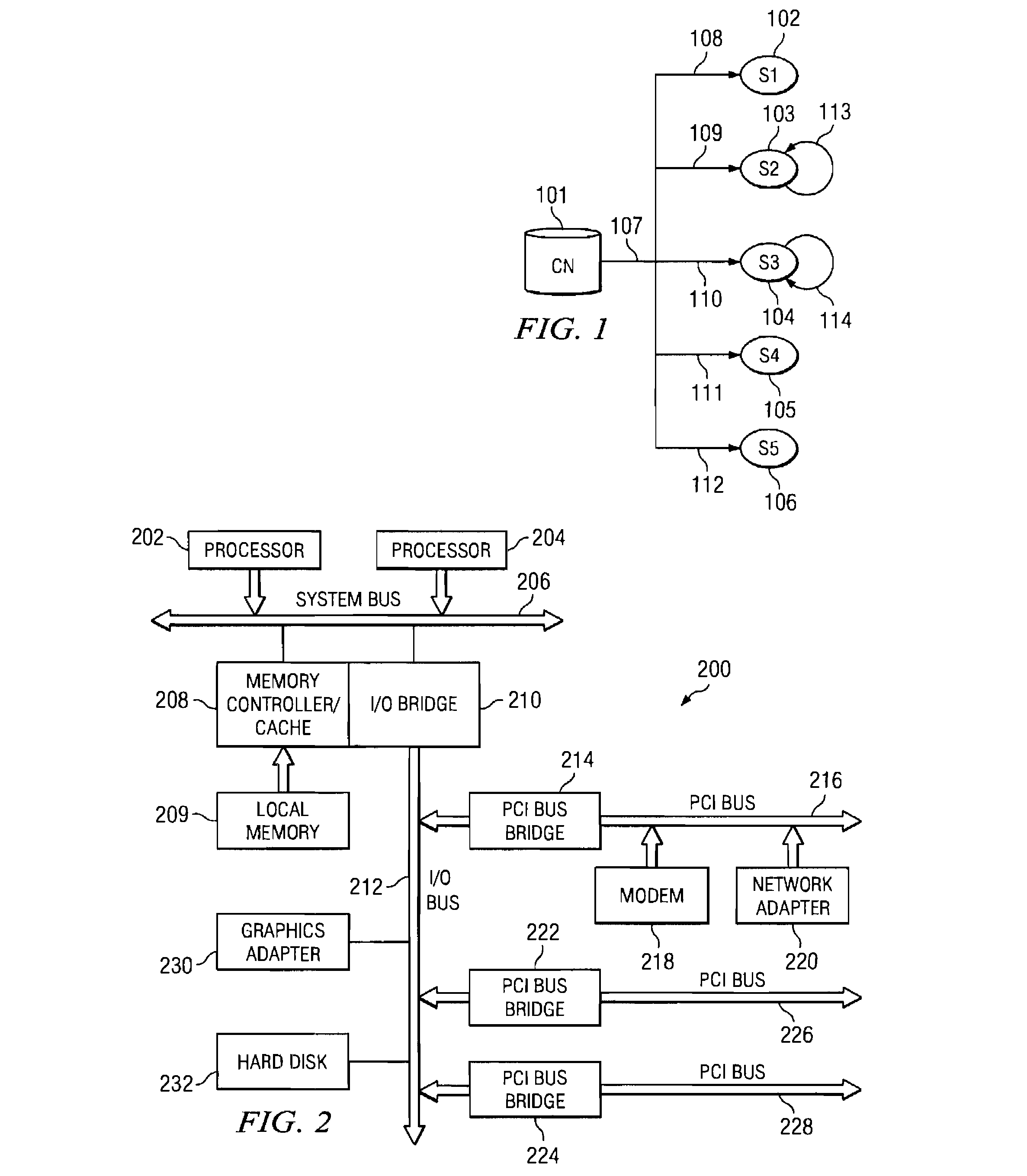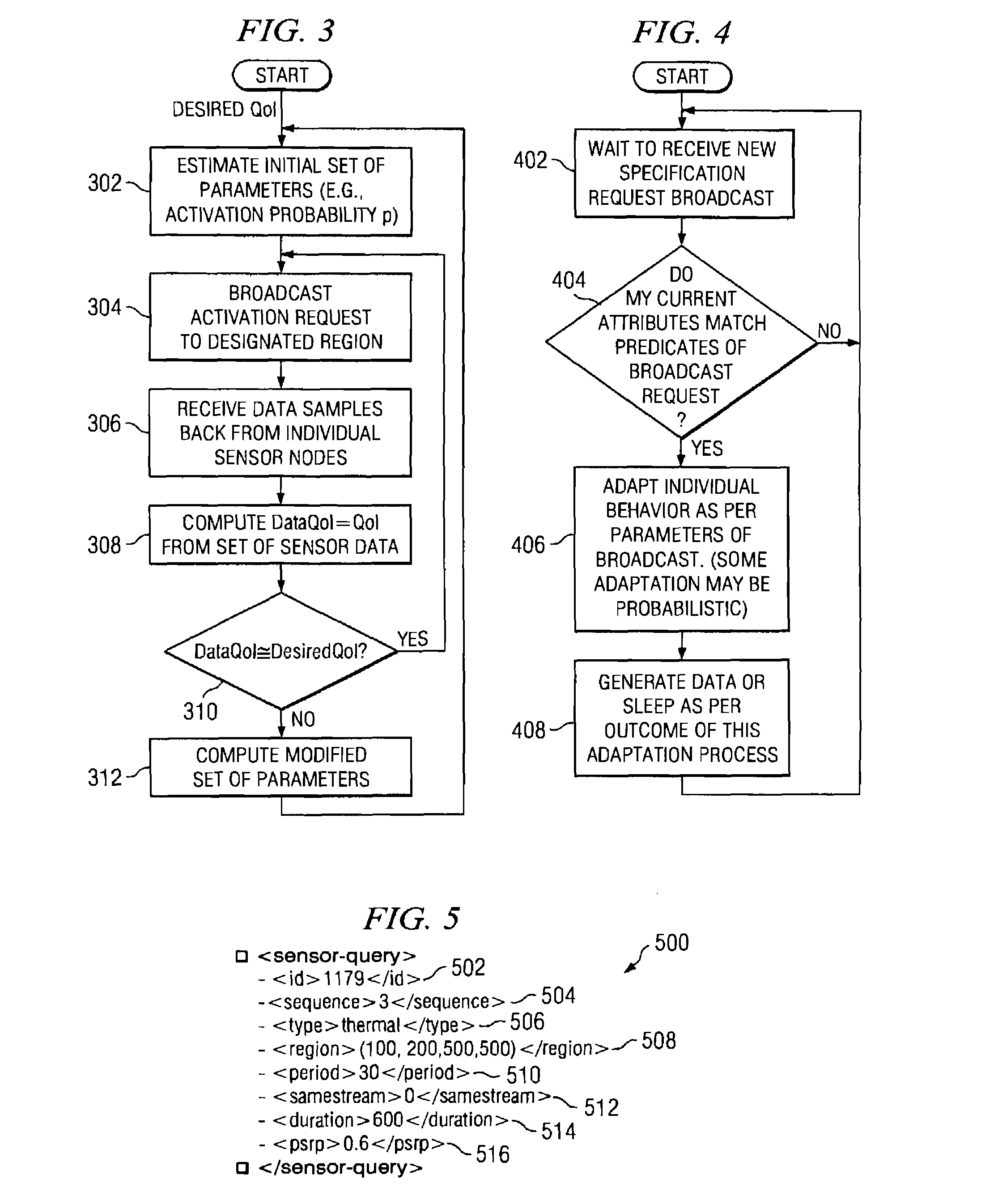Method for adaptively modifying the observed collective behavior of individual sensor nodes based on broadcasting of parameters
a sensor node and adaptive modification technology, applied in the field of computer and communication networks, can solve the problems of inability to accurately control the actual number or layout of the sensors deployed, network redundancy, lack of precise control, etc., and achieve the effect of rapid adaptation of individual sensor node behavior and faster convergence process
- Summary
- Abstract
- Description
- Claims
- Application Information
AI Technical Summary
Benefits of technology
Problems solved by technology
Method used
Image
Examples
Embodiment Construction
[0029]The present invention provides a “closed loop” control mechanism for continually maintaining the Quality of Information (QoI) requirements of an application, while avoiding the unnecessary activation of additional available nodes or the redundant setting of node parameters. The mechanism of the present invention provides a gateway node for propagating an initial set of parameters for an implicitly specified group of sensor nodes, without being directly aware of the presence or absence of individual nodes in that group. The parameters may define initial values of the content (initial values of “what”) that are propagated to remote sensor nodes in the field. The gateway node then iteratively continues to monitor the QoI that results from prior parameter settings, and alters the settings (future values of “what”) to try to attain the QoI objective. As a result of this continual monitoring and adjustment of propagated parameters, the mechanism of the present invention may ensure t...
PUM
 Login to View More
Login to View More Abstract
Description
Claims
Application Information
 Login to View More
Login to View More - R&D
- Intellectual Property
- Life Sciences
- Materials
- Tech Scout
- Unparalleled Data Quality
- Higher Quality Content
- 60% Fewer Hallucinations
Browse by: Latest US Patents, China's latest patents, Technical Efficacy Thesaurus, Application Domain, Technology Topic, Popular Technical Reports.
© 2025 PatSnap. All rights reserved.Legal|Privacy policy|Modern Slavery Act Transparency Statement|Sitemap|About US| Contact US: help@patsnap.com



